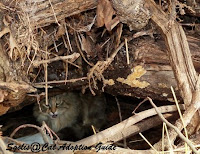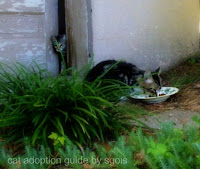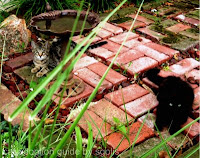
Save a feral kitten's life by being aware of kitten populations in your neighborhood and take steps to rescue them from a life of hardship.
If you live in an area where it is continually warm then female unaltered cats will reproduce repetitively and when the kittens are weaned at approximately 8 weeks these feral kittens will seek food and shelter in residential neighborhoods, parks or woodland areas. Feral kittens will be viewed playing in yards and gardens, eating out of dog’s food bowl, drinking the water in the pond, walking on your car and setting up a shelter under you deck. Some kittens will venture out into the streets. Other kittens will be chased by a stray dog and some kittens will be hunted by wildlife.
Only a few feral kittens survive living outdoors as the life expectancy of a feral cat is no more than two to three years. Some feral kittens will be saved from a life of hardship because you trapped and then socialized them before finding the feral kittens a forever home. Take the steps that are needed to save feral kitten lives.
How you can save a feral kittens life:
From a distance watch the kittens in your neighborhood. Feral kittens look like domesticated cats, they are cute, playful and their coat is well groomed. However feral kittens that are born outdoors are terrified of humans and are not friendly.
Determine if the kitten is feral or friendly also look for the mother cat, she may be out looking for food or she may be watching her kittens at a distance. Study the kittens by watching and waiting. If mother cat is not available then try to lure the kitten to you with food and water.
Put on heavy duty leather work gloves
The safest and most effective way to save a feral kittens life is to set up a live animal medium size trap
Tips:
Never grab a feral kitten with your bare hands. They will scratch you or bite you. Wear a secure fitting heavy duty work gloves.
Do not trap a feral kitten if you do not know what you are doing. Learn more about feral cats by joining Alley Cat Allies. As a member you will be able to contact feral cat caregivers or trappers in your community and these caregivers will be able to assist you with trapping.
Become a colony caregiver and trap feral cats for sterilization, and vaccines. Enlist volunteers to help you with the colony needs; daily feedings, fresh water and providing shelter if need be.
Save feral cat and kitten’s lives by spaying or neutering.























